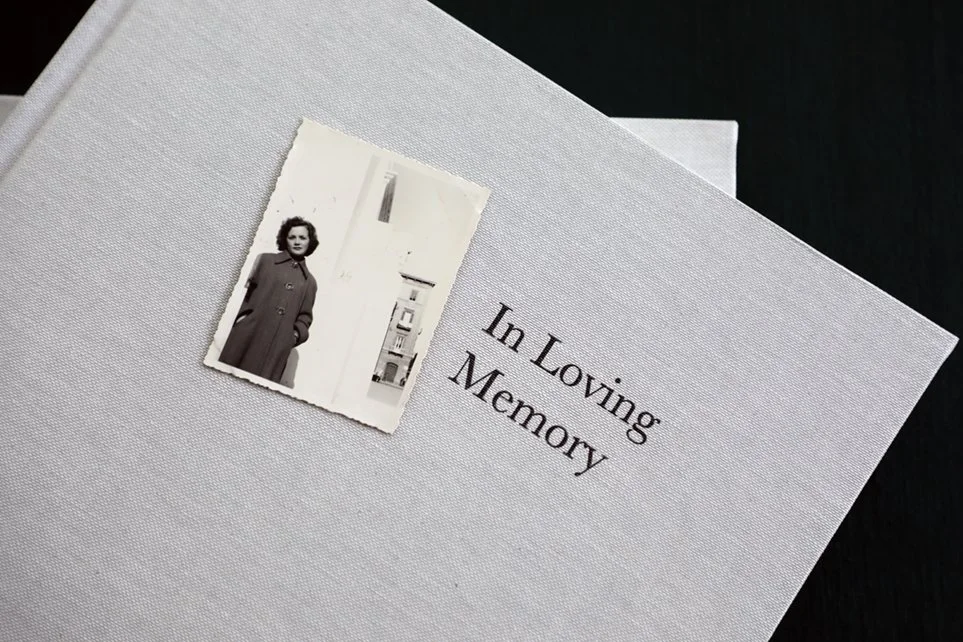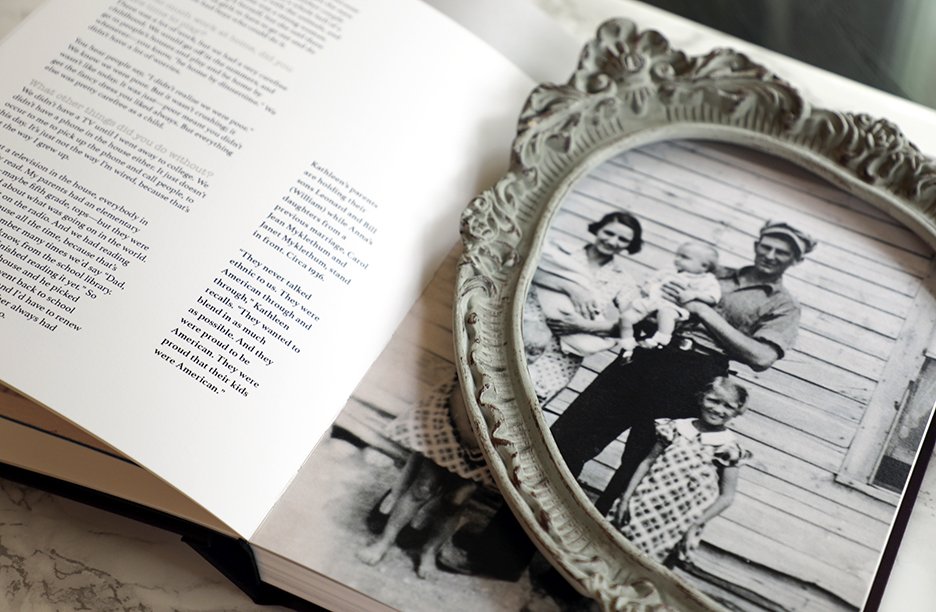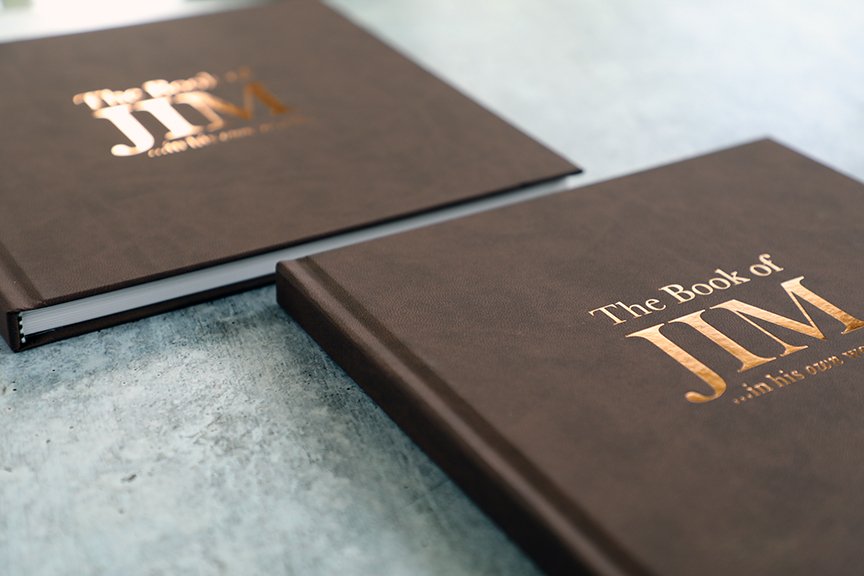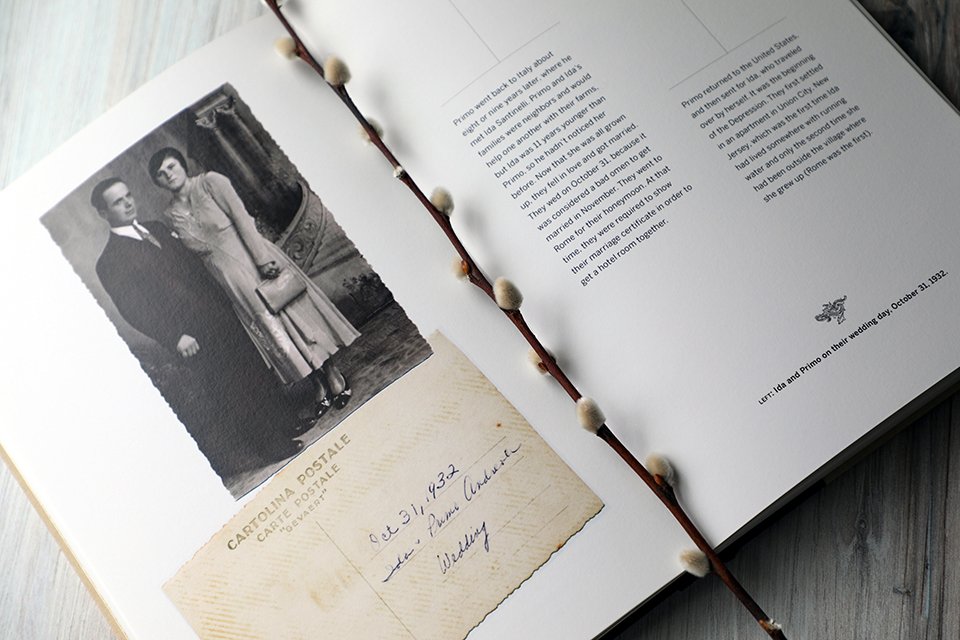The best photo captions do these things

Every photo caption in your life story book should either tell a story or provide vital information.
Whether you are designing a family photo book with highlights from the past year or creating a long family history book with plenty of narrative text alongside a few select images, writing good captions is a key to success.
Why do I even need captions?, you may ask—especially when you already know who is pictured and you immediately recognize the scene. Who wants to state the obvious?
Well, consider this: You (and even your immediate family) are not the only ones who may be looking at this book. What if your cousins or a friend pages through it? What if—and hopefully this is the case—your kids’ kids one day read it?
And think about the effect of time: Just because you currently remember that Tom’s birthday party was held at the bowling alley two towns over, will you really remember that detail a few years from now (I can say with certainly I would not!).
Don’t worry, though, as I’ve got a little cheat sheet for you. Every caption should do one of these two things:
Every family photo caption should…
Tell a story…
Sure, you may have told a long story in the main text portion of your book that relates to a given photo, but you want to deliver value to the reader who is combing through the pages quickly, too. Admit it—sometimes you just want to page through a book and read the graphic type and look at some pictures! I guarantee your descendants will one day do this, too. So either add a new detail in the caption (how wonderful it is to get even more context or emotional punch through a caption!) or concisely reiterate what the photo is showing.
Sharing interesting info alongside the photos in your book entices new readers to go further and read the whole story. Strong captions also provide touchstones for someone who has already read the entire book, but wants to revisit the stories to reminisce and sit with their memories for a while.
…or give vital information
Indicate who is pictured in a photo with clear directionals—for example, “clockwise from top left” or “from left.”
Family photo books don’t need full names for immediate family members, but do consider using first and last names for your children’s classmates or your work colleagues, for example.
In more in-depth storytelling books such as a memoir, a legacy book, or a family history book, do use surnames to identify people the first time they are shown. And occasionally be specific about relationships, particularly as you get further back on your ancestral lines (“my paternal grandmother, Betty…”, for example, orients the reader so they don’t have to flip back to your text or a family tree to avoid confusion).
Include dates and locations for milestone events such as a bar mitzvah, a wedding, or a ship passage across the ocean. If you know an approximate date, you can say something like, “circa 1912” or “early spring, 2020.”
Ask yourself: If I encountered this photograph in a book, what would I want to know about it? That simple strategy will help guide your caption writing.
Photos that don’t need captions:
secondary shots from the same scene or location, when details are enumerated in a nearby caption
mood shots, such as the spring flowers blooming in your yard or the sunset on your camping trip
photos used graphically on section openers, as long as they appear again in the main text
images that are self-explanatory (so if it’s a location shot and there is a sign saying where it is, for instance)
Go beyond a memorial slideshow and honor your lost loved one in a more permanent way. These three ideas for tribute memory books are easier than you think.
A love letter (or book!) overflowing with memories makes a thoughtful anniversary gift. Here, 14 writing prompts to help you honor—and surprise—your partner.
You've just returned from a family trip and know you want to make a travel memory book—just not right now! Follow these easy steps so you'll be ready later.
Want to make creating a travel book easy when you return from your family vacation? Follow these steps for easier—and elevated—post-trip memory-keeping.
Whether your family heirloom collection consists of generations’ worth of antiques or a handful of sentimental items, catalog them for the next generation.
Here’s how to make a tribute book for their milestone birthday—your step-by-step guide to the most unique, thoughtful gift you can give someone you love!
After we record your personal history interviews, I craft your story and photos into an heirloom coffee table book—not a video, not an audio file. Here’s why.
From gathering recipes to editing, from design to printing, these steps will walk you through how to create a family cookbook to preserve your food heritage.
From life story books to a family history collection, from travel journals to heritage cookbooks, our founder lists 10 of her favorite heirloom book themes.
A family photo book without captions is nice—but one with captions is an heirloom. A primer on what type of captions to include and how to design them cleanly.
Give your loved ones a gift they will cherish for years to come—one that puts memories front and center. Here are 3 (doable!) ideas to inspire happy tears.
The best posts to help you with memory-keeping, including family history questions, memoir writing tips, family photo preservation ideas & heirloom book themes.
If you’ve wanted to create a surprise tribute book telling your loved one JUST how special they are but cost is a factor, consider asking contributors to chip in.
These 3 photo book themes make it easy to show someone how much they are loved! Perfect for surprise birthday and graduation gifts—or just because.
Knowing your family’s recipes are preserved for the next generation is reassuring. Adding stories and photos, too, brings your food heritage to life. Start here.
When you want to cap off a milestone birthday party with a most meaningful gift, consider an heirloom birthday tribute book oozing with love and memories.
Writing a tribute book is a meaningful way to create a lasting legacy for a lost loved one. These expert tips from a personal historian will help.
If you would like to document your family stories in an adoption journey book, here is a road map for what to save, how to record memories, and when to begin.
Our food memories—sneaking tastes of Nonna’s sauce from the pot, learning to grill ribs from Dad—are worth preserving. Ideas to easily capture stories & recipes.
Searching for a groom gift beyond the traditional watch or cufflinks? Surprise him with an heirloom book expressing your love and gratitude—meaningful, unique.
Memoir reading suggestions to inspire your own vignette-style life story writing, from Annie Dillard and Kelly Corrigan to Robert Fulghum and Sandra Cisneros.
In Part Two of our Life Story Vignettes Writing Prompts series, guidance on conducting a probing self interview as an entry point to your stories and memories.
In Part One of our Life Story Vignettes Writing Prompts series, we offer five specific exercises for writing about your memories by engaging all your senses.
Preserving the full story of your adoption journey may mean sharing some of the pain, too—but how much you include is a personal decision. We can guide you.
Do you want to preserve your family stories, but have no idea where to start? We’ve got six special life story book ideas to spark your imagination.
Modern Heirloom Books founder Dawn Roode on her journey from national magazines to bespoke life story books, plus the new signature product lines of books.
Sometimes it’s not a long narrative that most interestingly tells your story, it’s a simple list. How to use lists to add texture to your life story heirloom book.
No one will tell your life stories but you. Start with one, & go beyond sharing it: Do something with it! 5 ideas for preserving one chapter of your life story.
Nine reasons why preserving your family’s story in an Adoption Journey book is a worthwhile investment, including making it part of your Gotcha Day celebration.






























A book that captures your legacy should be designed with longevity in mind, so it remains engaging and accessible for generations. It should be beautiful, too.